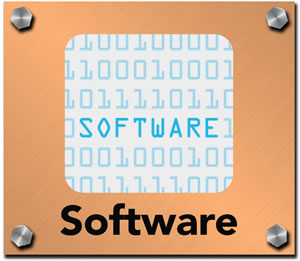The 2014 HME Handbook: Software
How to Use Software to Track and Improve Business Performance
 With the crushing weight of Medicare reimbursement cuts sitting squarely on their shoulders, providers need to drive as much efficiency as possible in every aspect of their business. From processing claims; to maintaining strict control over inventory overhead; to optimizing delivery operations; to ensuring adherence to all documentation requirements; providers must optimize the performance of every aspect of their business, top to bottom.
With the crushing weight of Medicare reimbursement cuts sitting squarely on their shoulders, providers need to drive as much efficiency as possible in every aspect of their business. From processing claims; to maintaining strict control over inventory overhead; to optimizing delivery operations; to ensuring adherence to all documentation requirements; providers must optimize the performance of every aspect of their business, top to bottom.
Moreover, providers need to maximize the performance of their efforts to drive revenue. For example, they must ensure that their retail operations are leveraging patient trends to drive sales, or that retail transactions are tied to overall inventory control.
And, on the funded side of the business, billing efficiency has taken on a whole new dimension when it comes to managing HME businesses. Claims must not only conform to rigid documentation requirements (especially in light of CMS’s ramped up audits), but the workflow must be fine tuned in order to ensure fast reimbursement.
And the one tool that has enabled providers to maximize this level of company-wide efficiency in a shifting business and regulatory environment has been software. And a key advantage to HME software systems is data. Once software is in place, providers begin generating and collecting data they can examine to not only judge how their business is performing, but to identify areas in which it can improve.
Deciding on Data Points
Of course, before a provider can track data, it must decide which points of data are important to track. A classic for DME providers would be days sales outstanding (DSOs), but that’s not the only one. Another would be inventory turns. Inventory is costly and comprises a big chunk of provider overheard, so how long is it sitting in the warehouse? Another possible important statistic to track would be how much business is coming from referral sources, and what kind of business, when, and from whom.
Other key financial metrics providers should monitor include the volume and dollars associated with sales orders; sales orders created vs. sales orders confirmed; the volume of CMNs logged; percentage of claims on-hold waiting documentation; dollars of payments on a monthly basis and what percent of the allowable dollars that are being created as revenue.
Reporting Tools
Reporting tools are incredibly invaluable for HME providers in terms of monitoring, and thusly managing, their businesses. With them, HME owners and managers can monitor how each element of their business is performing, and if there are any possible problems. HME software systems will offer providers a variety of canned reports that should help them monitor their business performance based on various data points. And, if a canned report doesn’t exist, most HME software systems provide tools for generating custom reports. Canned or homegrown, good HME reports will let management drill down on a particular data point so that they can examine related numbers and perhaps identify a trend and perhaps the cause of that trend.
Dashboards
In addition to reports, one tool that gives providers at-a-glance feedback on how their businesses are performing across all departments is a “dashboard.” Consider software dashboards a sort of “executive summary.” Just like the dashboard in a car, dashboards pull key metrics and assemble them into one or two simple screens, presenting them via basic graphic and numerical feedback.
A dashboard is typically the software’s default screen that gives providers useful, bottom-line, executive-level data at a glance. By looking at that one screen, managers can easily find key data you need to know immediately as well as links to learn more. For example, a dashboard might display real-time, automatically updated quick list of your top five best selling items for the day, and by clicking on those items, management can get more detailed information. The dashboard can help the provider understand which products are more profitable than others, and, therefore, which products to push to the forefront of their sales and marketing initiatives.
However, dashboards are a quick view, and it’s important for providers to go back and look at reports to ensure that the dashboard isn’t obscuring another trend. Monitoring one metric through a dashboard, without monitoring the other metrics that impact it could lead providers to completely misunderstand an important element of their businesses.
Benchmarking and Goal-Setting
Of course, the key is to use data to improve and grow, and that’s where benchmarking comes in. By using data to benchmark business performance, providers can get an idea of how their business currently performs and then start setting company and department objectives for improving output, fixing a problem or fine-tuning efficiency. And then management can use dashboards and reporting tools to monitor the work being done to accomplish those goals.
Points to Remember:
- Providers must optimize the performance of every aspect of their businesses.
- No better tool helps them drive increased efficiency and output than HME software systems, which help them collect key data on their business.
- To monitor that data, providers need to consider what are the most important statistics to track.
- Then providers can use reporting tools and dashboard views to track and monitor their performance.
- Data is only a tool; providers must engage in benchmarking and set goals first, and then use data to measure their efforts to accomplish those objectives.
Learn More:
This article originally appeared in the June 2014 issue of HME Business.